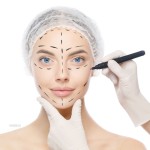Introduction
Botox, short for botulinum toxin, has revolutionized the field of cosmetic dermatology. Initially developed for medical purposes, its aesthetic applications have grown significantly over the years.
Historical Background
In the early 19th century, German physician Justinus Kerner first identified the botulinum toxin while studying spoiled sausages. However, it wasn't until the 20th century that its potential medical uses were explored.
Early Medical Applications
In the 1960s, scientists began investigating botulinum toxin as a treatment for muscle disorders. Its ability to relax muscles made it effective in treating conditions such as strabismus (crossed eyes) and blepharospasm (uncontrollable blinking).
Cosmetic Use Emerges
In the late 1980s, ophthalmologist Dr. Jean Carruthers and her husband, dermatologist Dr. Alastair Carruthers, discovered Botox's cosmetic benefits while using it to treat eye spasms. They observed its ability to smooth wrinkles and fine lines, leading to its approval by the FDA for cosmetic use in 2002.
Technological Advancements
Recent years have seen significant advancements in Botox formulations and delivery systems. New formulations provide longer-lasting results with fewer injections, enhancing patient satisfaction.
Improved Formulations
Manufacturers have developed variations of botulinum toxin, such as Botox Cosmetic and Dysport, each with unique properties and durations of action. These formulations allow dermatologists to tailor treatments to individual patient needs.
Targeted Delivery Systems
Advances in injection techniques and devices have made Botox administration more precise and comfortable for patients. Micro-needling devices and injection guides ensure accurate placement and optimal results.
Expanding Applications
Beyond its cosmetic uses, Botox has found success in treating various medical conditions.
Migraines and Chronic Pain
Studies have shown that Botox injections can reduce the frequency and severity of chronic migraines by relaxing muscle tension and blocking pain signals.
Hyperhidrosis Treatment
Botox effectively treats hyperhidrosis, a condition characterized by excessive sweating, by inhibiting sweat gland activity in targeted areas. Get the most affordable Botox injection price in Abu Dhabi.
Future Innovations
Researchers continue to explore new ways to improve Botox treatments and expand its applications.
Longer-Lasting Results
Efforts are underway to develop formulations that provide even longer-lasting results, reducing the frequency of treatments and enhancing patient convenience.
Alternative Neurotoxins
Scientists are investigating alternative neurotoxins with similar mechanisms of action to Botox, offering additional options for patients who may not respond well to traditional treatments.
Safety Concerns and Regulation
While Botox is generally safe when administered by trained professionals, there are potential side effects and risks to consider. Proper training and adherence to regulatory guidelines are essential to ensure patient safety.
Conclusion
The evolution of Botox has transformed cosmetic dermatology, offering patients safe and effective solutions for rejuvenating their appearance and improving their quality of life. With ongoing research and technological advancements, the future looks promising for further innovation in this field.





Comments